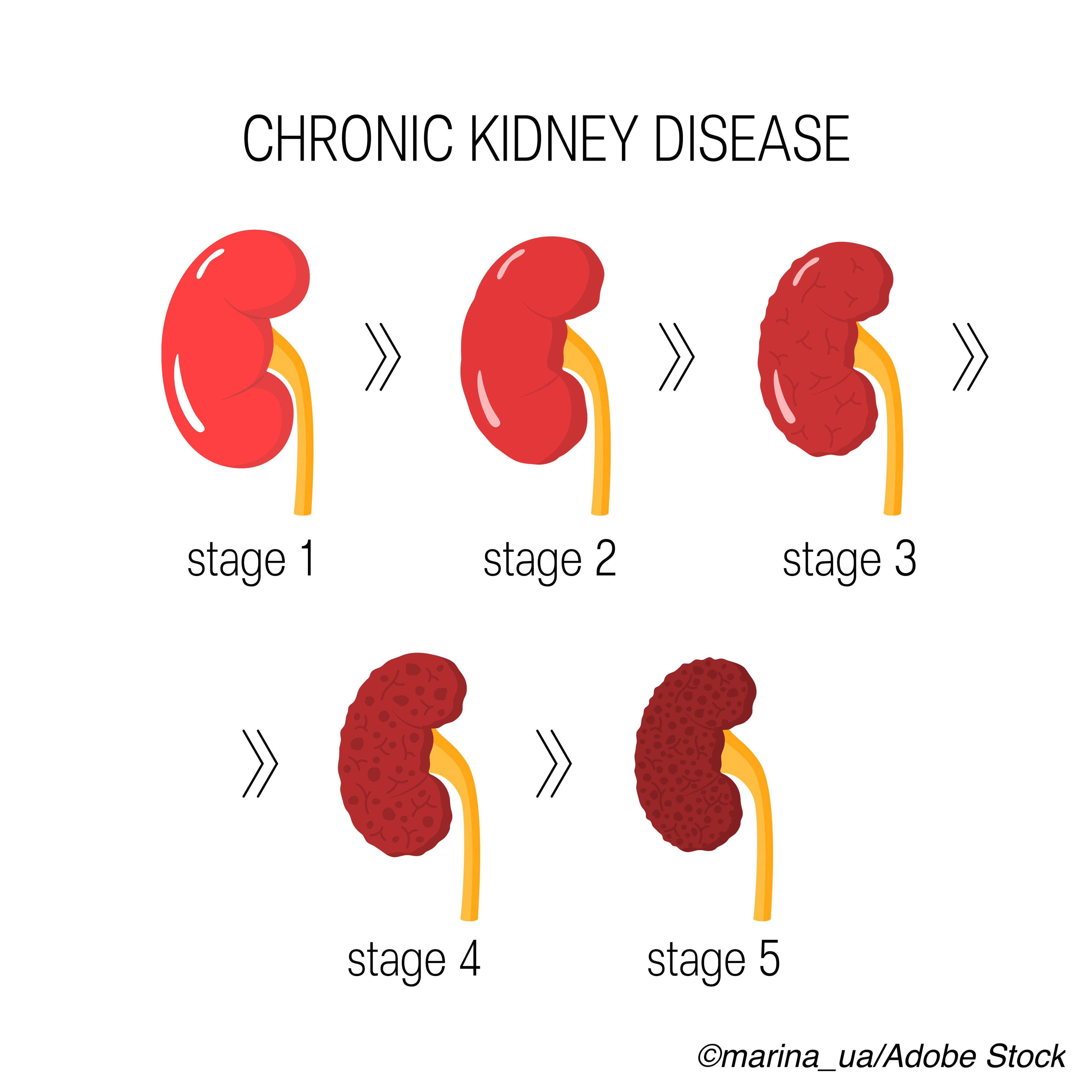Results from a phase III trial published in The Lancet demonstrated the superior efficacy of voclosporin in combination with mycophenolate mofetil (MMF) and low-dose steroids for treatment of patients with active lupus nephritis, confirming the early treatment response and overall treatment efficacy observed with voclosporin in the earlier phase II trial.
“Lupus nephritis is a severe manifestation of systemic lupus erythematosus that presents with proteinuria, hematuria, and impaired kidney function. Lupus nephritis can lead to end-stage kidney disease within 10 years of diagnosis in nearly 20% of patients. The ultimate goals of lupus nephritis treatment are preserving kidney function and reducing mortality, while minimizing treatment-related adverse events and improving quality of life,” wrote the AURORA researchers led by Brad H. Rovin, MD, of The Ohio State University Wexner Medical Center, Columbus, Ohio.
Voclosporin is a novel calcineurin inhibitor (CNI) specifically developed for the treatment of lupus nephritis, which 50%-60% of patients with systemic lupus erythematosus can develop, typically within five years of diagnosis.
For this multicenter, double-blind, randomized trial, Rovin and colleagues included 357 patients diagnosed with systemic lupus erythematosus with lupus nephritis and kidney biopsy evidencing histologic class III, IV, or V disease from 142 hospitals and clinics throughout 27 countries.
They randomized patients to oral voclosporin (23.7 mg twice daily) or placebo, with concomitant treatment with MMF (1 g twice daily) and rapidly tapered low-dose oral steroids.
The primary endpoint of the trial was complete renal response at 52 weeks, which researchers defined as a composite of urine protein creatinine ratio of ≤0.5 mg/mg; stable renal function (estimated glomerular filtration rate [eGFR] ≥60 mL/min/1.73 m2 or no confirmed decrease from baseline in eGFR of >20%; no rescue medication; and the need for no more than 10 mg prednisone equivalent/day for three or more consecutive days or for seven or more days during weeks 44-52 (immediately preceding primary assessment).
Significantly more patients treated with voclosporin achieved complete renal response at week 52 compared with placebo (41% vs 23%; OR: 2.65; 95% CI: 1.64-4.27; P<0.0001).
Similar numbers of patients experienced serious adverse events in both groups (21% in each group), and the most frequent serious adverse infectious event was pneumonia, seen in 4% of patients in each group. One patient treated with voclosporin died during the study or follow up, compared with five patients in the placebo group.
“None of the events leading to death were considered by the investigators to be related to the study treatments,” wrote Rovin and colleagues.
“Most standard therapies of lupus nephritis show a disappointing complete renal response rate and are associated with considerable toxicity, much of which is due to the use of high-dose steroids during the initial phase of treatment. The totality of the data suggest that the addition of a CNI such as voclosporin to background immunosuppressive therapy as a first-line treatment will significantly increase the proportion of patients with lupus nephritis achieving compete renal response at 6 and 12 months compared with background therapy alone. The improved complete renal response rate in this study is realized with far less corticosteroid than traditionally used in the treatment of lupus nephritis, and a moderate dose of mycophenolate mofetil,” they concluded.
In an accompanying editorial, Chi Chiu Mok, of the Tuen Mun Hospital, Hong Kong Special Administrative Region, China, noted that this is the largest randomized controlled trial in patients with lupus nephritis, and stressed the significantly fewer deleterious effects of voclosporin on blood pressure compared with conventional CNIs as well as the glucocorticoid sparing effects of treatment.
Nevertheless, Mok also outlined several limitations of the study. First, the time between study entry and renal biopsy was long (within 2 years). In addition, the duration of MMF treatment at baseline remained an unknown, and there were increases in blood pressure and decreases in eGFR during the first few weeks of treatment with voclosporin, albeit both were transient. Positive results were primarily driven by Asian and African patient subgroups, and “the benefit of voclosporin could not be shown in White patients, which contrasts with the subgroup data in the phase 2 trial.”
Mok also noted, “The absence of difference in eGFR between the two groups at week 52 could not simply imply efficacy of voclosporin or preclude the possibility of CNI nephrotoxicity…The study was not designed to evaluate the efficacy of voclosporin in pure membranous lupus nephritis. There was no information on extrarenal flares, which can occur in up to 41% of patients with lupus nephritis during follow-up.”
He added, “Given the skepticism regarding the hemodynamic effect of the CNIs in causing the short-term reduction in proteinuria, whether the bigger reduction of proteinuria by voclosporin in this trial translates into the long-term benefit of renal function preservation remains uncertain.”
Nevertheless, Mok concluded with an acknowledgement of the value of this study from Rovin et al.
“Despite these caveats, the availability of a more user-friendly CNI adds to the treatment armamentarium of lupus nephritis. Cost-effectiveness analyses are needed to determine the value of combining voclosporin with standard regimens as induction or rescue therapy for lupus nephritis,” he wrote.
-
Adding a calcineurin inhibitor (CNI) like voclosporin to background immunosuppressive therapy as a first-line treatment significantly increased the number of patients with lupus nephritis who achieved compete renal response at 6 and 12 months compared with background therapy alone.
-
The AURORA trial results are important, but should be interpreted in consideration of several caveats, according to the accompanying editorial.
Liz Meszaros, Deputy Managing Editor, BreakingMED™
This study and its publication were funded by Aurinia Pharmaceuticals.
Rovin reports personal fees from Aurinia, Callidatis, ChemoCentryx, Retrophin, Novartis, Morphosys, EMD Serono, Bristol Myers Squibb, Janssen, Omeros, and AstraZeneca; non-financial support from Lupus Foundation of America; and grants from National Institutes of Health (NIH), outside the submitted work.
Mok reported no conflicts of interest.
Cat ID: 67
Topic ID: 90,67,730,127,192,67,925




Create Post
Twitter/X Preview
Logout